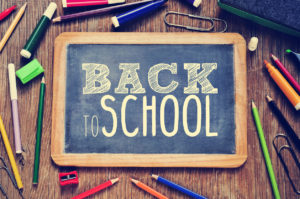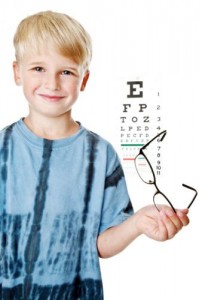School age children can experience unexpected and sudden changes in vision that may lead to behavioral and attention issues in the classroom. Make a comprehensive eye examination a priority for your child this year.
Some important health and safety tips for your child’s eyes:
- Look for indicators of vision issues. Common signals that your child may be experiencing a vision problem include covering one eye, holding reading materials close to the face, a short attention span and complaining of headaches or other discomfort.
- Prevent eye strain by monitoring use of digital devices. Increased exposure to electronic devices in and out of the classroom can cause digital eyestrain, including burning or itchy eyes, headaches, blurred vision and exhaustion. The American Optometric Association recommends following the 20-20-20 rule (taking a 20-second break, every 20 minutes and looking at something at least 20 feet away), blinking frequently and adjusting your child’s computer screen to prevent glare can prevent discomfort.
- Wear appropriate eye protection for sports and outdoor activities. Well-fitting, protective eye wear and quality sunglasses that offer UV protection are also critical to maintaining key visual skills for sports and preventing injuries.
One in four children has an undiagnosed vision problem because changes in their eyesight go unrecognized by both the child and their parents. Include an eye exam on your back to school list. It may be the single most important investment you can make in your child’s education and overall health.


